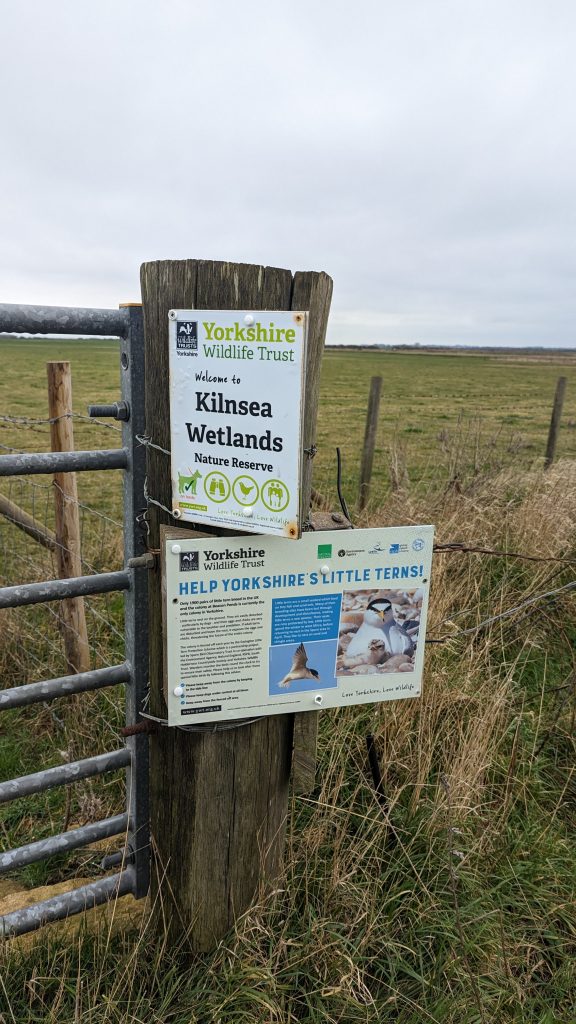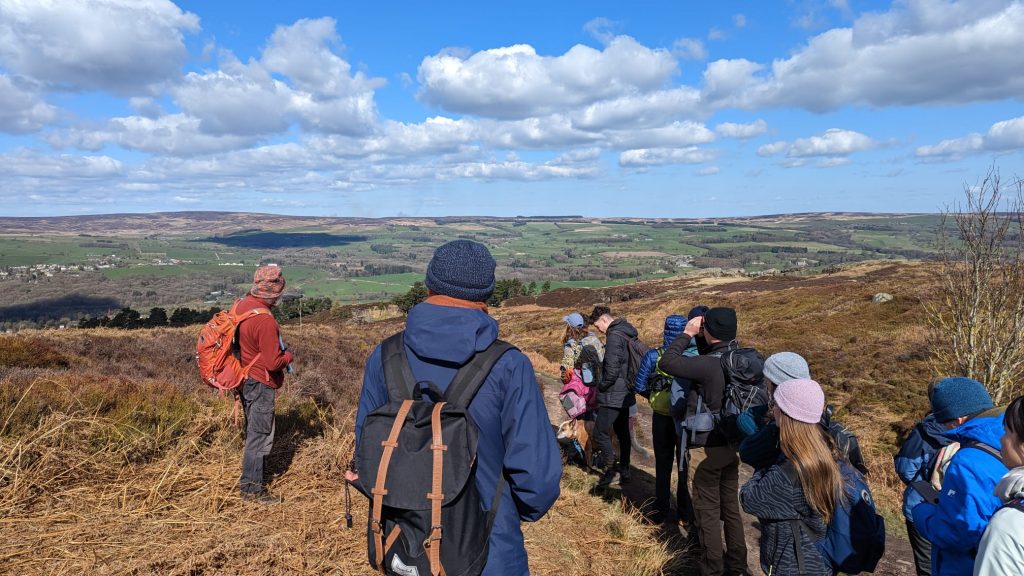Kilnsea Wetlands and the Impacts of Coastal Erosion
I must admit, I hadn’t heard of the Spurn Peninsula before I found out that I would be visiting the nearby area on a university “Habitat Management” field trip. When I searched for it on Google Maps, I couldn’t help but let out a small chuckle at the bizarre land formation that I saw on the screen.
However, I soon found out that we wouldn’t be making our way down to Spurn Point – the narrow tidal island located at the tip of the witch’s finger below – but we would be staying further north in the 35-hectare Kilnsea Wetlands Nature Reserve.

As we stepped off the coach after a 2-hour mid-journey nap (I am not a morning person), Andy Gibson of the Yorkshire Wildlife Trust greeted us with a welcoming grin, despite the harsh winds and icy rain battering us from all sides. Andy manages the reserve and used to live on-site until his recent move into the city to be closer to the primary schools where he’s currently involved in conservation education. Touching on this as we walked through the reserve, Andy spoke about how he focuses on educating the teachers just as much as the children to ensure that conservation remains a focus in the classroom after he leaves.
Once we reached the coastline, Andy explained the importance of the reserve and the unique benefits that it provides to local wildlife.
Kilnsea has been designated as a Site of Scientific Interest (SSSI) due to the critical role it plays in supporting key functional coastal habitats, serving as a high-tide roost for a significant range of overwintering and migratory wading birds, and providing a crucial breeding ground for little terns – a rare species with an endangered population in this reserve.

However, the area is experiencing a rapid state of coastal erosion, with habitat loss and flooding posing constant threats to the landscape; threats that are being amplified as sea levels rise and storms become more severe and frequent. At current rates, this vital wetland habitat may disappear completely in the next 30 years.
Surprisingly, Andy maintains a positive outlook. He views the flooding and subsequent erosion of the site as an inevitability and accepts the upcoming evolution of Kilnsea. In Andy’s (perhaps, controversial) opinion, he believes that attempting to stop water from travelling around the reserve may provide protection to the surrounding infrastructure but would not be worth the damage it would cause to the wetlands through the loss of water input. His passionate views on embracing change and working with nature – rather than forcing habitats to fit molds of the past – mimicked my own.

Throughout our visit, we were lucky enough to set our eyes on a variety of the bird species that call Kilnsea home. Flocks of wigeon, greylag geese, oystercatchers, redshank, and brant geese enjoyed the many miles of grassland and salt marsh. Whilst two of my personal highlights had to be witnessing my first ever starling murmuration – a rare occurrence within the site – and watching two barn owls hunting midday after 24 hours of rain.
Although managing suitable habitats for a diversity of bird species is incredibly important – especially if we want to be able to show our children the likes of a little tern colony on British sand – Kilnsea is yet another nature reserve that prioritises bird conservation over other taxa. Andy acknowledged this and shared the constant struggle that the nation’s Wildlife Trusts face in finding conservationists with an entomological focus. When I told him of my personal interest in all things insect conservation, his face lit up as he provided me with a list of companies that I should apply to throughout Yorkshire.
As my education and career progress, I hope to find a role that will allow me to encourage a more holistic management approach within Britain’s green spaces, ensuring that the importance of all taxa is understood and appreciated.
Look deep into nature, and then you will understand everything better.
– Albert Einstein
If you’d like to visit Kilnsea Wetlands or find out more about the conservation efforts currently taking place there, be sure to visit the Yorkshire Wildlife Trust’s website and read TIDE’s summary of management measures.

